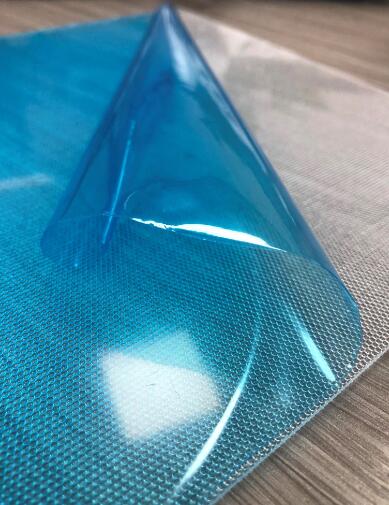PE protective film is the roll type film that has a adhesive layer which has been processed by corona treatment. It’s ideal for providing protection in the process and transportation of targeted product. It’s also one of the main material for finished product packaging. The biggest advantage of PE protective film is that the protected product will not polluted, corroded, scratched during production, processing, transportation, storage and use, and the original smooth and shiny surface is protected, thereby improving product quality and market competitiveness. But, there are also some problems with the PE protective film. And, today we will introduce to you with the problems of PE protective film.
Problem 1: The PE protective film is not firmly adhered to the product to be protected and falls off during transportation and use. The most likely reason is that the viscosity of the pressure-sensitive adhesive used is not enough. Another possibility is that the pressure of the molding machine used by the user when attaching the mold is not enough, or the surface of the profile is not clean, and there is dust or paint, etc., which affects the sensitive adhesive. The paste effect! If this problem occurs, it is necessary to address the cause, replace the sensitive adhesive to increase the pressure of the film, or pay attention to effective cleaning of the surface of the profile when applying the film to avoid the occurrence of such problems.

Problem 2: After the PE protective film has been used for a period of time, it performs well in the middle, but becomes flaky at both ends. The main reason for this phenomenon is that the protective film stretches to a large extent during the process of pasting it with the profile to be protected. In the future, unnecessary shrinkage occurred when encountering high-temperature environments. This problem mostly appeared on products from southern customers. Therefore, during the production process of PE protective films, attention should be paid to the impact of ambient temperature differences on product use. During the pasting process, Avoid unnecessary surface stretching.
Problem 3: The most common problem reported by users is the degumming problem of protective film products. This problem is most manifested in profile protective films. When users tear off the protective film from the surface of the profile after completing the installation and construction of the profile, the adhesive film appears. It does not follow the protective film, but remains on the profile product. This is the last thing users want to see, because it is very troublesome and requires a special person to scrape the glue off the profile, which is very labor-intensive and time-consuming. There are many possibilities for the problem. The most likely problem is that the pressure glue used for the protective film product does not meet the regulations, that is, it is too sticky. As a result, when the PE protective film product is peeled off, the external tension is greater than the internal stress and remains on the profile. . If the user encounters this problem, he or she can use a clean rag dipped in a little alcohol and wipe the remaining sensitive adhesive repeatedly until the sensitive adhesive is wiped clean. However, it should be noted that when wiping, do not overdo it. Use force, otherwise the finish of the profile product may be affected.
Problem 4: The protective film product is difficult to peel off. When the profile product is peeled off after installation, the protective film cannot be effectively peeled off. There are two possibilities. One is that the sensitive adhesive used in the protective film product is not a special sensitive adhesive for protective film. If it is In this case, the protective film will of course be very effective when pasted, but it will be very difficult to peel off. This is also the most common problem with the protective films produced by some illegal protective film product manufacturers. Another possibility is The material used in the protective film master tape is too soft and cannot withstand the tensile force during peeling. It will break during peeling off, which is a very headache for users.
